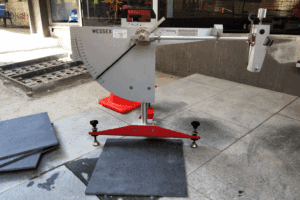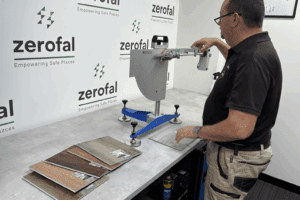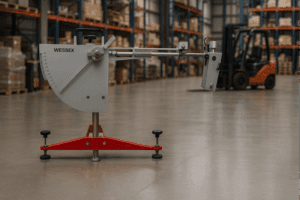Risk by Design: Why Post-Install Testing Matters as Much as Pre-Check
Why Post-Install Slip Testing Is Essential
Lab test results don’t reflect real-world conditions. AS 4663–2013 testing is just as important post-install as pre-check to verify slip resistance under actual usage. What passes in the lab might fail on site.
A tile with a compliant P-rating in the lab can still become hazardous once installed. It might be sealed, polished, cleaned with aggressive products, or installed on a slope. Foot traffic and weather can also wear down the surface faster than expected.
That’s why AS 4663–2013 exists. This in-situ standard measures the slip resistance of the actual floor as installed, not just the product in isolation. Where AS 4586–2013 tests the material in the lab, AS 4663–2013 confirms how that surface performs in real life.
Common risk factors post-install:
- Sealers that reduce surface roughness
- High-gloss polish applied after handover
- Textured finishes worn down by traffic
- Cleaning practices that leave a film or change friction
In many cases, a surface that was P4 in the lab can test as P2 on site. This creates exposure for building owners, tenants, and facilities teams. It may also void insurance or fail WHS audits.
Already Installed?
You need an AS 4663–2013 test. Contact Zerofal to verify your floor’s actual performance – and reduce your risk.
Explore more

Colour, Grit and Surface Finish: How Subtle Differences Change Slip Ratings (AS 4586:2013)
Colour, grit and finish change slip resistance. Learn why P-ratings vary across tile ranges and coatings

Why One Slip Test Isn’t Enough for Product Lines (AS 4586:2013)
Slip resistance varies across colours and finishes. Learn why one AS 4586 test cannot certify an entire product line.

Industrial Slip Resistance: Dust, Boots & Coating Drift (AS 4663:2013)
: Industrial floors change fast. Learn how dust, coatings and machinery reduce slip resistance and why AS 4663 onsite testing is essential.
Stay Ahead of Safety Standards
Join the Zerofal newsletter for actionable insights on slip testing, compliance updates, and smart prevention strategies. No spam – just practical safety advice.
